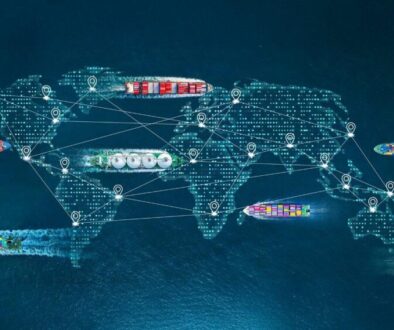BY DR SOHA MAAD
Introduction
The new year 2023 will be a tough year at all levels, with forecast of economic recession triggered by various factors, more wars, and a non-ending pandemic (endemic).
With several global crises occupying our daily lives, it is important to identify how we can leverage technology to solve problems and address challenges. Today, we have more access to data from various devices, environmental sensors, video capture, and other connected devices. When combined with cloud technologies, Artificial Intelligence (AI), computer vision, machine learning, Internet of Things (IoT), simulation, and the metaverse, information technology may have a key role in addressing challenges, bringing financial and monetary stability, counteracting recession, building solutions to save the planet, and re-imagine the supply chain from the warehouse to delivery. As access to advanced technology becomes even more ubiquitous, innovation will accelerate in 2023. Economically, in 2023 experts see that we are in a bit of trouble, but some amazing technologies are coming to market.
Starting with the prediction of looming global economies and intensified crises, this article presents an outlook of technology in 2023. This outlook covers digital transformation, emerging technologies (Artificial Intelligence AI and robotics, cloud computing, edge computing, metaverse, big data), cybersecurity, technical devices (Personal Computers PCs, vehicles, televisions, mobile phones), technology regulation, and supply chain transformation. This outlook is built based on the review of world top forecasts and predictions from Harvard Business Review, Euronews, CNN, e-news, Statista, IEEE, All Things Distributed, Tech-news-world and big technology firms such as CISCO, BMC Software and others. The article concludes with future trends and what will matter next in year 2023 for banks and financial institutions.
Looming Global Economies, Wars, Crises And Endemic
Experts sees that the 2023 economy looks ugly. The last few years were not great for several reasons, but mostly because governments did not deal with the pandemic well. Shutdowns crippled the supply chain, and when people started coming back, they wanted to buy stuff, which created an imbalance between supply and demand. In addition to this government agencies are doing terrible things to interest rates.
In 2023 there will be high-interest rates on borrowing and high-interest rates on savings. More effort is needed to shift perceptions so that buying behavior changes rapidly enough to mitigate the problem.
China will remain a problem largely because its Covid responses are failing, and its government is unwilling to ask for help. China’s vaccines appear ineffective, but instead of seeking foreign vaccines that work, they struggle with being overwhelmed by sick people. These circumstances may force an ill-advised war with Taiwan. This suggests that China’s military, like Russia’s, may not be able to perform as well as Chinese leadership expects. Manufacturing in Taiwan and exports from China will create a new and even bigger supply chain problem.
Ukraine is not expected to be able to recover its manufacturing capacity until two to five years after the war ends. But with ongoing war, it is likely to continue to have shortages tied to Ukrainian manufacturing through 2023, especially in chips which are critical part of most electronics, including cars.
The International Monetary Fund IMF projected that global growth will fall to 2.7% in 2023. Three factors may cause economic recession in 2023:
- Central Banks role: inflation is the most immediate threat to current and future economic prosperity. Central banks have key role in manipulating interest rates.
- China reopening: For almost three years, the Chinese government has limited the spread of Covid-19 using centralized quarantines, mass testing and rigorous contact tracing. The imminent reopening of China, the world’s second-largest economy could spur growth. But it also carries risks.
- Energy: Russia war in Ukraine continues to add uncertainty to forecasts, especially for countries in Europe. According to the International Energy Agency, Europe could face a natural gas shortage in 2023 if Russia cuts off all gas exports to the region and the weather turns colder.
Digital Transformation Outlook 2023
Every step toward digital transformation will yield real-world gains, and in the recessionary market that will define 2023, will have great impact on organization’s health. The new phase of digital transformation will be led by smart connectivity and networks. Resilient and agile supply chains can be a weak link or great competitive advantage. Predictive technologies move us away from using isolated data analysis to real-time decision making. Multi-cloud models are designed to be elastic and scalable to complex regulatory and service-level requirements. Smart connectivity and networks help organizations anticipate and respond to global trade issues, workforce changes, and other unexpected events. Enterprises and logistics providers will increasingly utilize Internet of Things (IoT) to bring greater visibility into their supply chains in 2023. IoT and other technologies will not only play a larger role in bringing better resiliency and efficiency into supply chains but can also help to improve network management. As a result, organizations will start to reconfigure supply chains around predictive and prescriptive models including smart contracts and distributed ledgers. This is a major transition toward more sustainable business practices and circular supply chains.
In the year ahead, the network will become more experience-centric with increasing capabilities to predict end user experience issues and provide problem-solving options. Predictive networks will be powered by predictive analytics that are gathered from myriad telemetry sources. As deglobalization and issues around data sovereignty accelerate, there will be a shift in how companies leverage multicloud architectures.
BMC Software identified six trends to watch for digital transformation in 2023
- The Future of Work: how we work is constantly evolving, and technology will continue to be key to enabling work flexibility.
- Economic Growth Shifts: the turbulence of the financial markets is becoming normal, and the nations driving global growth are shifting, and geopolitical challenges is altering how business is conducted.
- Supply Chains, including procurement, manufacturing, distribution, inventory and last-mile delivery, have changed in ways where data and insights are critical.
- Cybersecurity: Cybersecurity is everybody’s job and not only the job of the technical team.
- The Value of Data: Immense data is created and this creates big opportunities if we can capture, analyze, and apply it for better business results.
- Social responsibility in the organisation: this creates an opportunity when right decisions are taken in respect of climate change, diversity, and inclusion.
Artifitcial Intelligence And Robotics Outlook 2023
According to CISCO, the cloud and Artificial Intelligence (AI) are no longer frontiers. The digital economy is the new tech green space. Nearly eight out of every ten companies have experienced at least one cloud data breach. The transition to net-zero will be as disruptive as the industrial revolution. Businesses need to separate the trends from the hype to capture competitive value.
On the other hand, Euronews predicted that Artificial Intelligence will be a big player in 2023. AI will continue to grow and become more democratised changing a lot of industries, especially the media. Innovation in synthetic biology, quantum computing and advanced AI robotics is going to be far more profound in the next five to 10 years than the last two decades.
TechNewsWorld sees that 2023 will be a huge year for AI and robotics. 2023 will be the year when AI-driven personal robotics expands well beyond the initial wave of the robotic vacuum cleaner. One area that will see a massive increase in the use of artificial intelligence is the health care industry.
E-week forecasts indicate a significant expansion of AI beyond robotics to intelligent automation. Enterprises will seek out AI solutions that can deliver on objectives. AI will completely transform security, risk and fraud. Healthcare AI will soon move from a reactive to a proactive state.
Cloud Computing Outlook 2023
As deglobalization and issues around data sovereignty accelerate, in the year ahead we will see a discernible shift in how companies leverage multicloud architectures. While 89% of enterprises are adopting a multicloud strategy for a variety of reasons (geopolitical, technical, provider diversification), the benefits come from additional complexity in connecting, securing, and observing a multicloud environment.
Networking services should route traffic efficiently and securely while complying with all data sovereignty laws. Storage services should inherently comply with data residency regulations. And processing should adhere to relevant data localization standards. Availability will be the key for cloud computing in 2023
Over the last decade, there was a huge spike in businesses moving to the cloud. Year 2023 is the age of the Cloud Revolution that better enables application modernization through rehosting, refactoring, re-platforming, and more. Organizations will continue to migrate to the cloud, and there will be more effort to modernize the cloud.
Cloud adoption will be heavily influenced by cost optimization. Cloud migration and repatriation will continue and bring new demand. Cloud cost management will be key in 2023.
Metaverse Outlook 2023
The metaverse is still a mess. Once it matures, the metaverse will have the ability to convey a vision of the future better than any prior technology. Metaverse technologies will remain just hype, while digital transformation technologies trends higher
Crypto Technologies Outlook 2023
The challenging economic times have impacted the price of cryptocurrencies in 2022. The industry has also seen the spectacular collapse of the third-largest crypto exchange FTX. The entire crypto market lost more than $1.4 trillion (€1.3 trillion) in value in 2022 amid multiple crashes, including the Terra Luna saga. Euronews predicts that in 2023 we will witness the growth of multi-chain ecosystems where users do not have to switch between networks when making transactions through several chains simultaneously. The promising thing about the growth of these ecosystems is the focus on the technology and the applications it can enable, which is the most interesting part about the crypto industry. Economic conditions will have an impact on the crypto industry, which will be constrained by the macro conditions such as high interest rates and sluggish global markets growth. Investment activities will be much slower than in the past two years with investors taking a wait-and-see attitude. Their decisions will also be affected by the wider market environment.
Edge Computing Outlook 2023
As edge devices become smarter, and process, manage, and drive insights closer to the user, there is growing need for edge-native application ecosystems. In 2023, we will see growing adoption of application development frameworks for the edge replete with new data management, compliance and security Application Programming Interfaces APIs. Different edges will be implemented for different purposes. Telecommunications providers have their own architectures that break down into a provider far edge, a provider access edge, and a provider aggregation edge. The use of private 5G networks in industrial settings, such as manufacturing where sensors and robotics are heavily used, will begin delivering on the promises of device connectivity, machine reconfigurability and real-time data analysis. Edge developers will embrace open standards and frameworks
CYBERSECURITY OUTLOOK 2023
An accelerating digital attack surface will demand more and future-proof security innovations. New business innovation capabilities are needed in the area of risk management, compromised credentials, misconfigurations, and malicious and inadvertent misuse of resources. New innovations are needed in secure digital access to products and services as well as new security applications and more secure Application Programming Interfaces API. As modern cloud-native applications are becoming drivers of business, protecting the underlying application environment is critical. In 2023, developers will get more and more support from various tools that help speed up development cycles and allow them to better manage and secure distributed application architectures with an emphasis on delivering exceptional, secure digital experiences. In quantum cryptography, transmitting keys poses a fundamental risk to security, as keys can be harvested and decrypted later.
Zero Trust will be a mindset in 2023. We should not trust anyone or anything that wants to access data or join a network without verifying credentials. Zero Trust will improve mobile security because it ensures only authenticated users get access. Cybersecurity transparency will be a strength.
Security concerns will be the primary concerns for Information Technology (IT) team. Companies will be focusing more on cybersecurity and looking for solutions to make their devices less vulnerable. IT departments will implement IT monitoring solutions as organizations become more demanding of the quality of service and much more fearful of increasing cyber-attacks. Behavior-based analytical detection will be required.
Technology Devices Outlook 2023
- ELECTRIC CARS: 2023 will be the year that electric charging capabilities will increase dramatically, and we will see the second-generation battery and engine technology hit the market with increased range and performance.
- PERSONAL FLYING VEHICLES: In 2023 we will see an impressive number of electric flying personal recreational vehicles hit the market.
- PERSONAL COMPUTERS PCs: PCs will undergo screen modifications, from multiple to rolling screens, throughout the year. We expect more efficient chargers, a much greater focus on sustainability overall, and a continued effort to develop PCs as a service (PCaaS).
- SMARTPHONES: Smartphones will have rollable displays and improvements in camera software helping to create better-looking photos. Real-time video streaming enhancements and features will improve, and we will see the next generation of Artificial Intelligence AI-based digital assistants. There will be wireless charging enhancements in premium line phones as the year progresses.
- VIDEOCONFERENCING AND COLLABORATION DEVICES: There is a confusion surrounding whether people will remain home or return to the office. As a result, video conferencing solutions will be diverse, with some focused on improving the experience in large rooms and others in the home. There will be better camera tracking with cameras, better noise isolation with microphones and speakers, and significantly stronger audience monitoring tools.
- TELEVISIONS: 2023 will be the year of the true emergence of 8K TVs, and we will see more affordable rollable display TVs in limited runs.
Global Supply Chain Digital Transformation Outlook 2023
We are in the midst of another energy crisis. Rising costs and reliable access to energy are global problems and they impact everyone. There are several maturing technologies that are beginning to converge, and together, they will enable us to address this like never before. In 2023, adoption of technologies, such as computer vision and deep learning, will propel the supply chain forward. Driverless fleets, autonomous warehouse management, and simulation are just a few of the optimizations that will lead to a new era in smart logistics and global supply chain.
The key to transforming the supply chain is to use technology to optimize each step along a product’s journey. In 2023, we will see an acceleration in the development of smart factories, smart equipment, and smart shipping.
What Will Matter Next In 2023 For Banks And Finances
- MONITORING AND KEY PERFORMANCE INDICATORS (KPI): To survive and thrive, banks and financial institutions need to be able to tie data insights derived from normal Information Technology IT operations directly to business outcomes to avoid the risk of being overtaken by more innovative competitors. Full observability of business outcomes is important, as a significant problem with monitoring has always been too much data with too little context and business correlation. The evolution of application monitoring toward full observability will increasingly provide a view relative to business context. This can dramatically speed up response and optimize business operations in real time. In 2023, business context will become widely recognized as an integral part of monitoring and visibility outcomes. In 2023, there will be a significant shift toward the open-source ability to grab information from multiple domains.
- INNOVATION AND SUSTAINABILITY: Responsible innovation will move fast toward building a better, more inclusive future for all. Banks and financial instittions will have to define a purpose that goes beyond profitability with responsibility, sustainability, equity and inclusion as guiding themes. Net zero will drive common standards to meet sustainability goals with advancements in Power Over Ethernet (PoE) design and hardware to transform data centers for a more sustainable future. Networking and APIs will become more advanced within data center platform management to monitor, track, and change the use of energy.
- BREAKING SILOS: The winners in 2023 will be those armed with the right tools to break down organizational silos across domains and disciplines and work together without limits to affect real and lasting change.
- TECH REGULATION: Government regulation, especially in cryptocurrency, is likely to be very crucial in 2023. The Markets in Crypto-Assets (MiCA) Regulation, the European Union EU’s legislation for governing digital assets across member states, is expected to come into force in early 2023. The law aims to maintain financial stability and protect investors while also promoting the transformation in the crypto asset sector. the Digital Services Act (DSA) will definitely come into force. The DSA legislation is essentially aimed at social media companies and is intended to tackle online hate speech and disinformation, protect children and prevent consumer fraud.
- UPLEVELING HUMAN CAPITAL: While low-code/no-code tools will make it easier and faster to adopt digital technologies in traditional business processes, people will not be replaced by technology any time soon.
- NEED FOR NEW VALUE METRICS: The key to helping banks and financial institutions gain a greater understanding of IT technologies, practices, goals, and limitations is the ability to translate technology initiatives into bottom-line value metrics.
- SMART INVESTMENTS WILL LEAD TO INNOVATION IN 2023: Investment in 2023 will be focused on practical investments that accelerate digital expansion and IT innovation and that will actually pay off in 2023, not the future.
- CATERING FOR THE CITIZEN DEVELOPER: Team members in organizations are utilizing low-code technologies and IT team had nothing to do with it except providing employees with the low-code tool. This is the start of an influx of citizen developers in every company. In the future, IT teams will intervene to address complicated problems while team members in non-technical roles from throughout the organization can take the lead in developing tools that best meet their needs.
- EHANCING OBSERVABILITY: Observability is based on exploring patterns in cloud data not defined in advance. In 2023, data will be collected from sensors and used to instrument operations truly harnessed for business value with the design pattern in observability showing the way.
- COMPETING PRIORITIES: As we enter 2023, company-wide technology decision-making is very important. Banks and financial institutions must prioritize reducing costs, but they are finding themselves pulled between contrasting concerns of managing spend, dealing with security risks, and fostering innovation.
- TECH AUDITS WILL DETERMINE WINNERS AND LOSERS: Banks and financial institutions will be auditing their technology. In 2023, the biggest wins will come from software that provides a suite of applications instead of single, unintegrated point solutions.
- DATA WILL DRIVE DECISION-MAKING: With heightened scrutiny of budgets and Return on Investment ROI, measurement and reporting is key. The ability to democratize data analysis across an organization will allow teams to continue to deliver critical insights while keeping costs down.
- ANALYTICS WILL GO MAINSTREAM: In 2023 more analytics will be conducted than ever before. Today’s terminal devices are almost as powerful as low-end servers, and the increasing availability of 5G networks has enabled the transmission of more data at higher speeds. As more data is pushed to the edge, it will enable real-time decision-making in the field, shorten response times, and reduce cloud infrastructure’s compute, storage, and network costs. For these reasons, along with lower technical barriers, there will be greater interest in analytics at the edge in 2023.
- PRIORITIZING THE CUSTOMER EXPERIENCE: Customer experience will matter even more than in 2022. In a down economy, customer experience is even more important for company’s success.
- IT sustainability and cost reduction: As remote work remains a constant heading into 2023, IT sustainability will be important. Around 70% of the carbon footprint of a laptop comes from the manufacturing process. A key concern for banks and financial institutions is how their organizations can more efficiently reuse, repurpose, and refresh IT equipment.
Conclusion And The Future Ahead
2023 will be particularly difficult for companies that either do not understand what market they are in or pull back too hard on demand generation funding, allowing their competitors to move around them. There will be a smaller pool of available spending fund. Whether the world falls into recession or not, the next 12 months are likely to be difficult. Even if a global recession is averted, many countries could still endure downturns accompanied by painful rises in unemployment.
Technology will be key for banks and financial institutions to survive if appropriately understood, implemented, regulated, and deployed in a responsible way.



